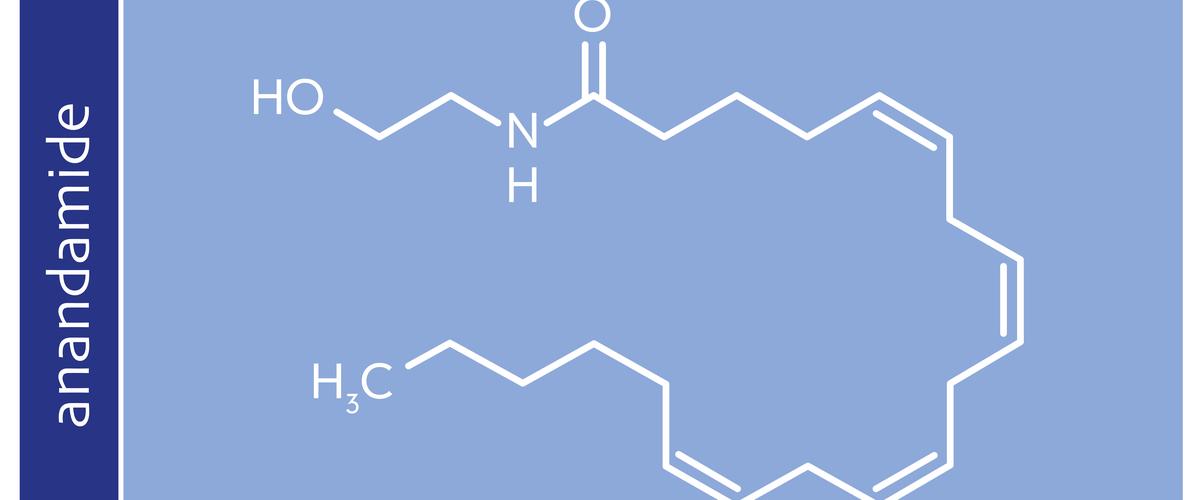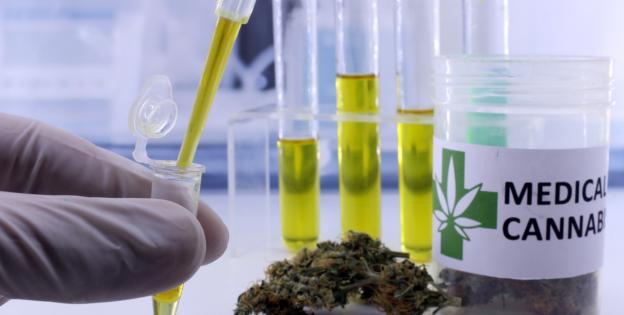- Everyone has their own reasons for using cannabis, but one thing is clear: the plant makes us feel better both physically and mentally.
- From relaxation, through creativity, to sharing good times with friends, there are many ways in which you can use the cannabis plant – it all depends on your personal preferences as a consumer.
- But what happens inside the brain when we smoke? Why does cannabis make us feel so good on so many levels? To try and shed some light on these questions, we have analysed the responses and interactions triggered by cannabis in the human brain.

Anandamide: The neurotransmitter that makes you high
A number of studies by American researchers carried out on animals several years ago attributed the perception of pleasure in humans to dopamine, a neurotransmitter that enables communication within the nervous system and that is involved in our everyday behaviour.
These studies suggested that the human "reward system", the brain area that make us feel pleasure in situations that we interpret as being positive, gets activated in the presence of tetrahydrocannabinol or THC, which also dramatically increases dopamine production in the brain's limbic system.

This theory, however, was disproved in the early 1990s, when Israeli researcher Raphaël Mechoulam – the first scientist to identify and synthesise THC – discovered a neurotransmitter called anandamide, to which he attributed the feeling of happiness and satisfaction we derive from our daily life situations.
Dopamine was found to play a much smaller role in humans than in animals, proving that the previous studies on animals were not applicable to humans.
The word "anandamide" derives from "ananda", which means "happiness" and "joy" in Sanskrit. Often referred to as "the molecule of happiness", anandamide plays a huge part in how we perceive pleasure and related feelings. It is involved in memory, intelligence, body language, pain, appetite and fertility, and can potentially inhibit the growth of cancer cells in humans.
Also, its role in the formation of nerve cells gives it antidepressant properties. But like many neurotransmitters, anandamide is rapidly degraded in the body, meaning the happiness it brings is fleeting and momentary.
Anandamide: A closer look
Anandamide is an endogenous cannabinoid neurotransmitter that is naturally produced in the brain. Endocannabinoids occur naturally in the body of animals and humans just like phytocannabinoids occur naturally in plants. Both phyto- and endocannabinoids have a high affinity for the CB1 and CB2 receptors in the endocannabinoid system. In fact, it is THC's interaction with the CB1 receptors that causes the euphoria we associate with cannabis.
Because anandamide and THC have identical properties, the effects of cannabis are to a large extent comparable to those of anandamide. Much like a high precision mechanism, THC takes effect almost immediately when cannabis is smoked or vaporised because, once it binds to the right receptor, the body is prompted to create a specific response. This activates the brain's reward system, which creates a feeling of wellness or pleasure that is consistent with the situation experienced by the user.

Generally speaking, cannabis is associated with pleasurable effects, although one in five users may find the experience of smoking unpleasant. This is because the natural enzyme that degrades anandamide, known as FAAH or fatty acid amide hydrolase, is produced in higher amounts in some people than in others, meaning the way their body reacts to the substance is also different.
People with lower levels of FAAH absorb anandamide more slowly, and so are subject to fewer fluctuations of the substance. As a result, while they are typically more relaxed and emotionally stable, their body is also more sensitive to the effects of cannabis, having to deal with feelings of anxiety that are perceived as a negative experience.
Also worth noting is the fact that THC is a biphasic cannabinoid, which means it has different effects depending on the dose. When taken in small amounts, effects tend to be pleasurable, including euphoria, clarity, relaxation and wellbeing. High doses, instead, will generally lead to bad experiences marred by anxiety, paranoia and sweating. So like with all biphasic substances, responsible consumption is the key to a balanced, enjoyable experience.
The symbiosis between the endocannabinoid system and phytocannabinoids is a most fascinating one. However, further research is needed to fully understand the mechanism behind this extraordinary relationship. Cannabis has still plenty to offer, and as science advances its myriad of benefits will become increasingly evident.




Comments from our readers
There are no comments yet. Would you like to be the first?
Leave a comment!Did you like this post?
Your opinion about our seeds is very important to us and can help other users a lot (your email address won't be made public).